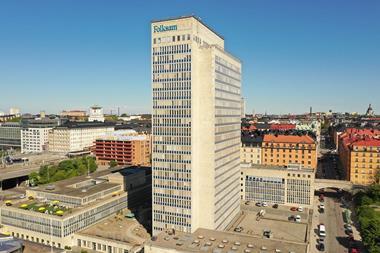The Institutional Investors Group on Climate Change (IIGCC), which includes some of the world’s biggest pension funds, has set out its decarbonisation expectations for the steel sector in a report it says will inform engagement between investors and steel firms.
Published today as part of the Climate Action 100+ corporate engagement investor initiative, the report focuses on what investors can do push the steel sector to cut greenhouse gas emissions while remaining owners – rather than divesting from the sector which it says accounts for 9% of global emissions.
John Howchin, secretary general of the Council on Ethics of Sweden’s AP funds, said: “There is increased focus from all stakeholders on the hard to abate sectors. Business as usual is no longer acceptable, considering the decarbonisation challenges that these sectors face.”
In order to align with the International Energy Agency’s net zero by 2050 scenario, the IIGC said the steel sector’s net scope one emissions had to fall by 29% by 2030 and 91% by 2050.
But as things stood, the industry was “not on track to meet these targets by some margin”, it said, adding there was scant evidence of the concerted actions needed to limit demand growth.
There was also a lack of support for policies to decarbonise steel in the countries now dominating production, it said.
The report is entitled ”Global Sector Strategies: Investor interventions to accelerate net zero steel”.
The Church of England Pensions Board’s chief responsible investment officer Adam Matthews said if investors were going to remain as stakeholders in steel businesses and provide money for them to change, there had to be clear targets and detailed transition plans showing the feasibility of key technologies and what enabling public policy they needed.
“Additionally, it will be essential for the sector but also investors to secure commitments from those that buy steel,” he said, adding that this meant investors had to engage the whole “value chain” to drive demand for zero-carbon steel.
“Today we begin to set out our understanding of the sector’s transition to underpin our work over the coming years,” said Matthews, who is also chair of the Transition Pathway Initiative.
The IIGCC said key expectations of companies included decarbonisation targets; demonstrating the feasibility of emerging technologies – such as carbon capture and hydrogen-based DRI-EAF to decarbonise steel production; committing to align capital expenditure with a broader net-zero strategy, and being transparent about their policies.
At US pensions giant CalPERS, Anne Simpson, managing investment director, board governance and sustainability, said that although investors recognised climate change was a financial risk to their portfolios, they also saw the transition to net zero providing a “tremendous opportunity”.
“It is our fiduciary duty to address that risk and opportunity,” she said.
“There is no time to lose and the $55trn signatory base supporting this work shows that investors see the urgent need for action,” said Simpson, who chairs the Climate Action 100+ steering committee.
Swedish pensions and insurance group Folksam recently announced it had increased its stake in steel firm SSAB, saying that even though it was currently one of the biggest emitters in the Nordic region, SSAB was on a big transformation journey towards fossil-free production of the metal.
Looking for IPE’s latest magazine? Read the digital edition here.
Topics
- active ownership
- AP funds
- CalPERS
- Church of England Pensions Board (CEPB)
- climate
- Climate Action 100+ (CA100+)
- Climate change
- CO2
- Corporate governance
- decarbonisation
- engagement
- ESG
- greenhouse gas emissions (GHG)
- Institutional Investors Group on Climate Change (IIGCC)
- International Energy Agency (IEA)
- Investor Strategy
- Pension Fund Strategy
- Sweden
- Transition Pathway Initiative
- United Kingdom
- United States









No comments yet